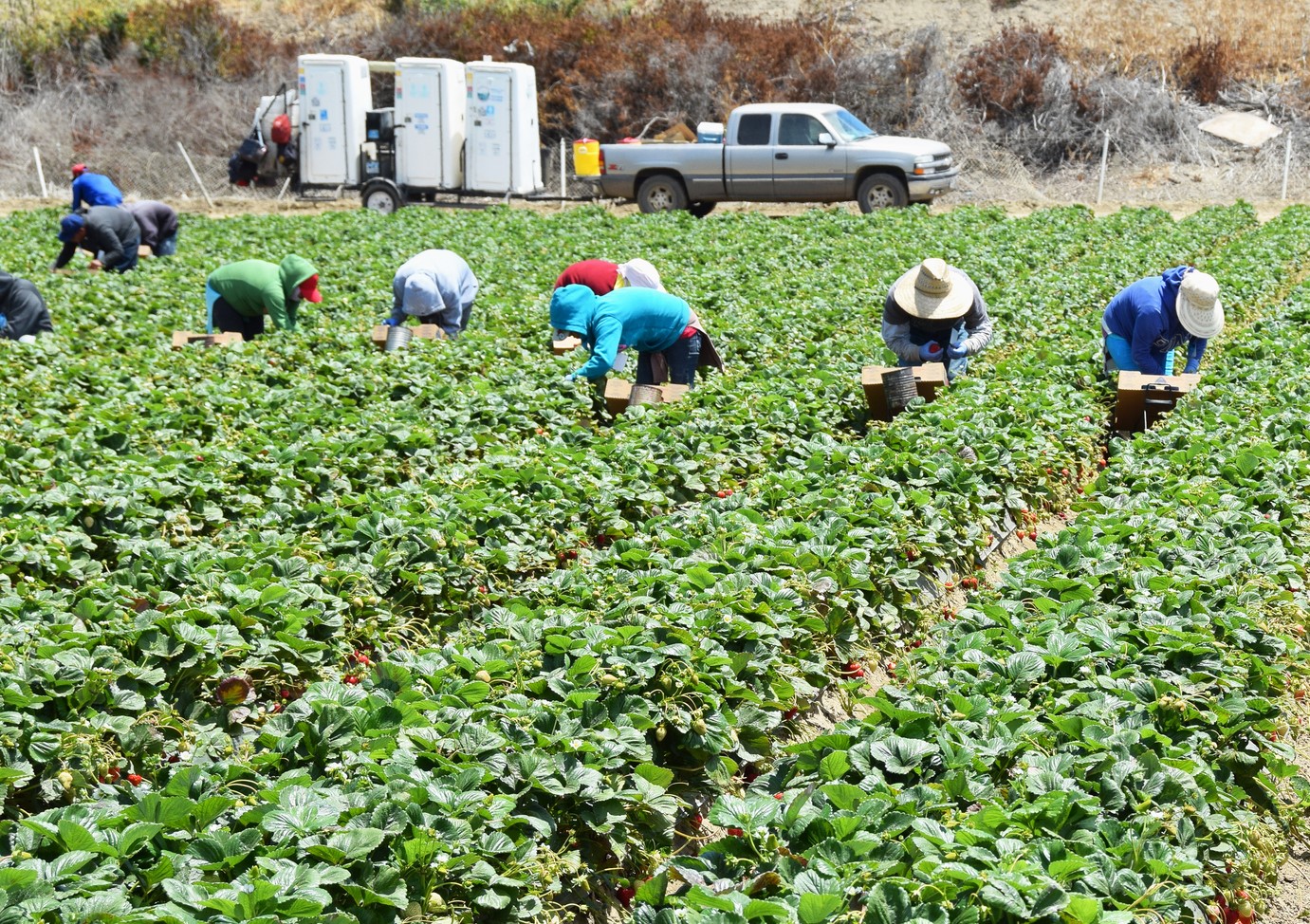
Migrant Labor and US Agriculture
- Dr. Philip Martin
- April 10, 2024
- Forum Papers
- Forum Paper
- 0 Comments
Click here for a downloadable, printable PDF version.
The Second in a three-part series.
An NPG Forum Paper
by Dr. Philip Martin
April 2024
The US Department of Labor has a National Agricultural Worker Survey (NAWS) that interviews 1,500 to 3,000 workers employed on US crop farms each year and is the best-known source of farm worker data.1 The NAWS finds that 70 percent of crop workers were born in Mexico, and that 70 percent of Mexican-born workers are unauthorized, making half of US crop workers unauthorized. These workers, many of whom arrived illegally in the 1990s and early 2000s in their 20s and 30s, are now in their 40s and 50s and settled in one place. Their US-educated children generally shun the seasonal farm jobs that brought their parents from Mexico.
The NAWS was launched to understand the impacts of the Immigration Reform and Control Act (IRCA) of 1986 on the farm labor market. IRCA included the grand bargain that remains at the heart of agricultural immigration reform proposals: legalize unauthorized farm workers and make it easier for farm employers to hire temporary migrant workers.
IRCA failed to produce a legal farm workforce. IRCA had two amnesty programs: a general amnesty for unauthorized foreigners who had lived in the US since 1982, and a Special Agricultural Workers (SAW) program for unauthorized farm workers who did at least 90 days of farm work in 1985-86. Some 1.7 million foreigners were legalized under the general program and 1.1 million under the SAW program; 85 percent were Mexicans.
The SAW program turned into “one of the most extensive immigration frauds ever perpetrated against the United States government.”2 During the debates before IRCA was enacted, it was widely asserted that few farm workers had documentation of their farm work, so the SAW program allowed applicants to provide one-sentence affidavits from a labor contractor or a fellow worker that said: “Juan Morales picked tomatoes for 92 days in 1985-86 in Fresno County.” Applicants were assumed to be truthful, so the burden of proof was placed on the government to prove that the SAW applicant was lying. The government had few mechanisms to check SAW work histories, and approved over 1.1 million of the 1.3 million applications, legalizing up to 700,000 foreigners who did not do 90 days of farm work (Martin et al 1988).
The unauthorized foreigners who became US immigrants under the SAW program without doing the qualifying farm work continued to live in urban areas, but now as legal immigrants. About 30 percent of workers interviewed by the NAWS in the early 1990s were legalized SAWs, but they quickly left agriculture and were replaced by newly arrived unauthorized workers who usually purchased false drivers’ licenses and immigrant visas that allowed workers and employers to satisfy I-9 employment eligibility verification. The share of unauthorized farm workers reached 50 percent by the mid-1990s, and only began to fall in recent years as the H-2A program expanded…Continue reading the full Forum paper by clicking here.
Your gift helps publish and distribute materials like this.
Philip Martin received his degree from the University of Wisconsin-Madison in 1975. His research focuses on:
immigration, farm labor, and economic development.
Martin is Chair of the University of California’s Comparative Immigration and Integration Program, and editor
of the monthly Migration News and the quarterly Rural Migration News.
Martin has earned a reputation as an effective analyst who can develop practical solutions to complex and
controversial migration and labor issues. In the U.S., he was the only academic appointed to the Commission on
Agricultural Workers to assess the effects of the Immigration Reform and Control Act of 1986. He received UC Davis’
Distinguished Public Service award in 1994. He assessed the prospects for Turkish migration to European Union
between 1987 and 1990, evaluated the effects of immigration on Malaysia’s economy and its labor markets in 1994-
95, and Martin was a member of the Binational Study of Migration between 1995 and 1997. In 2001-02, he assessed
the options for dealing with unauthorized migration into Thailand.


